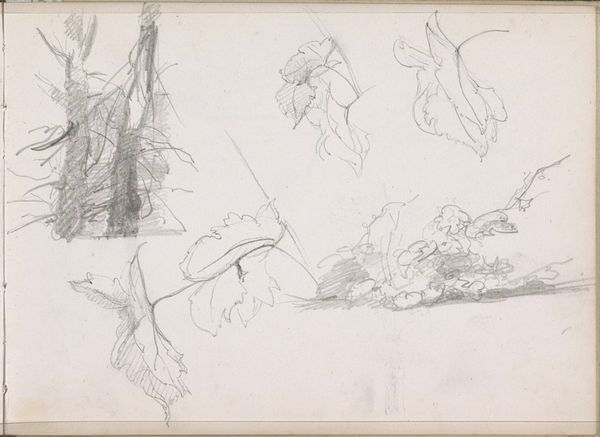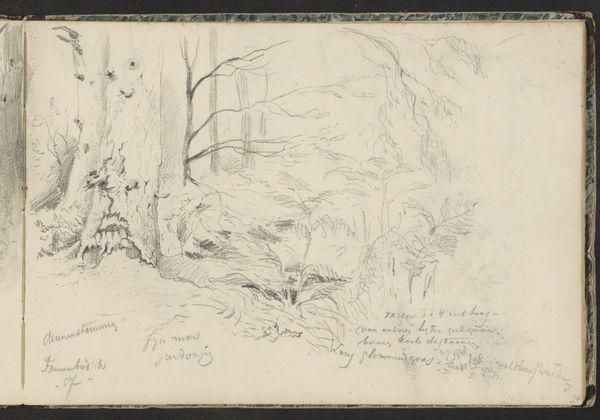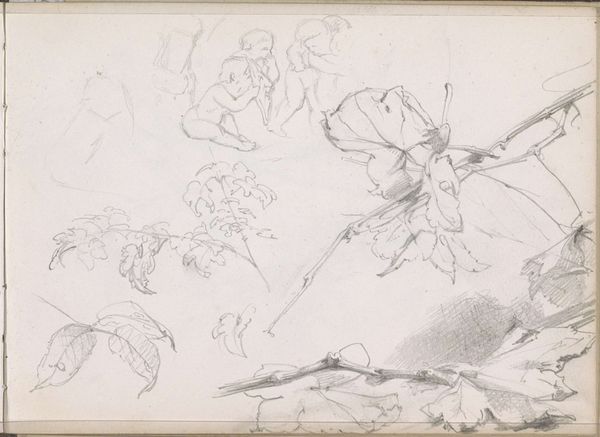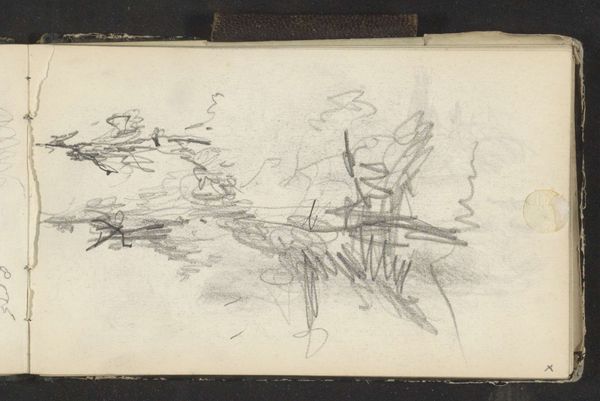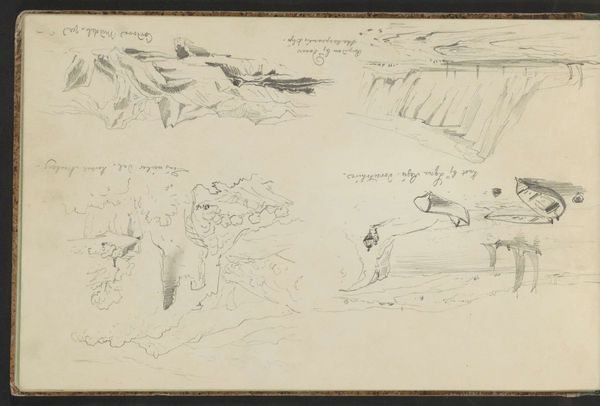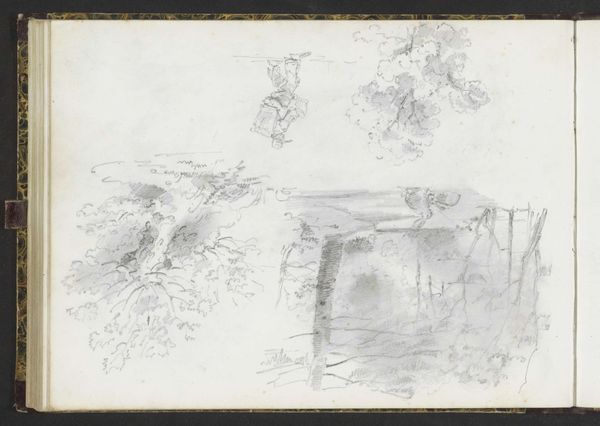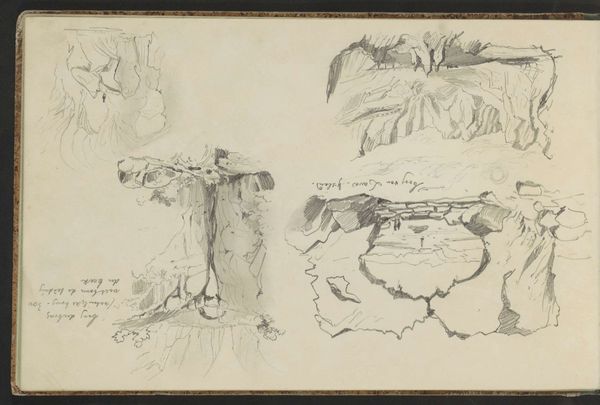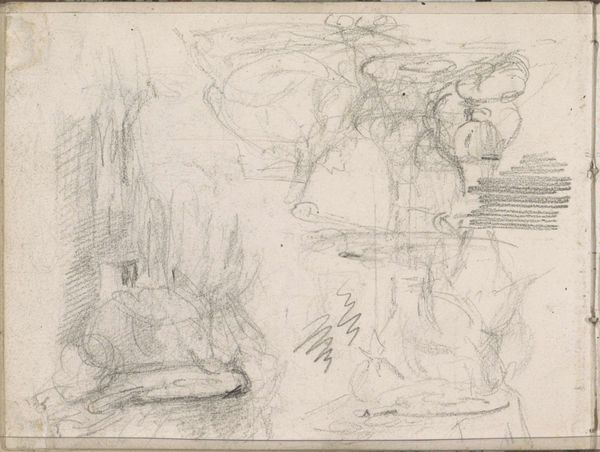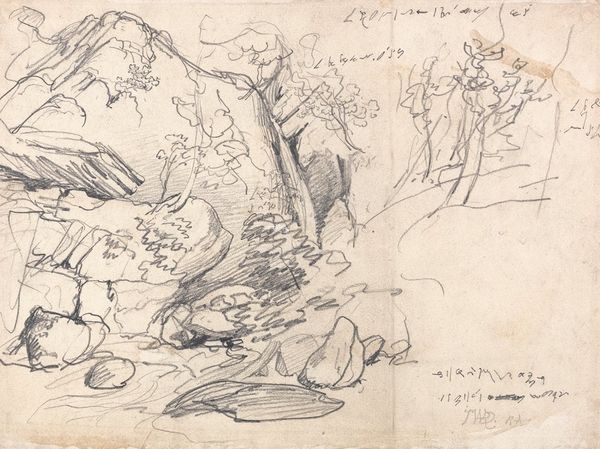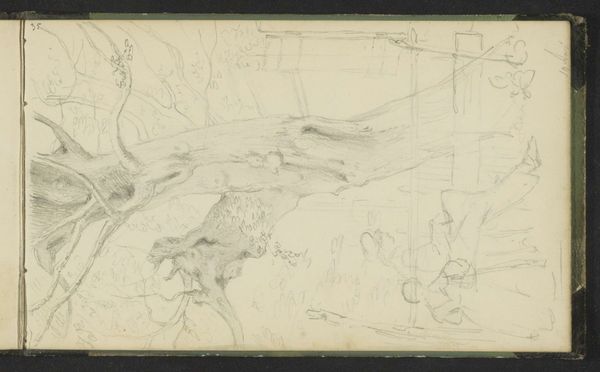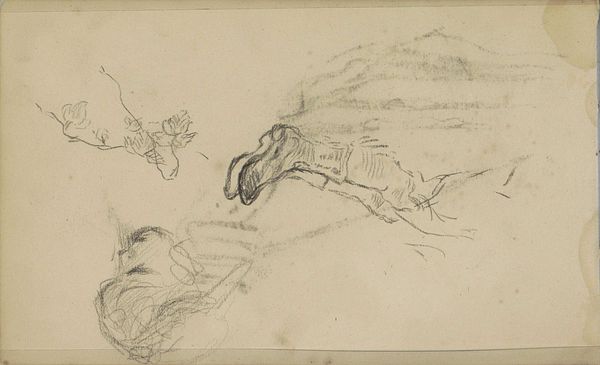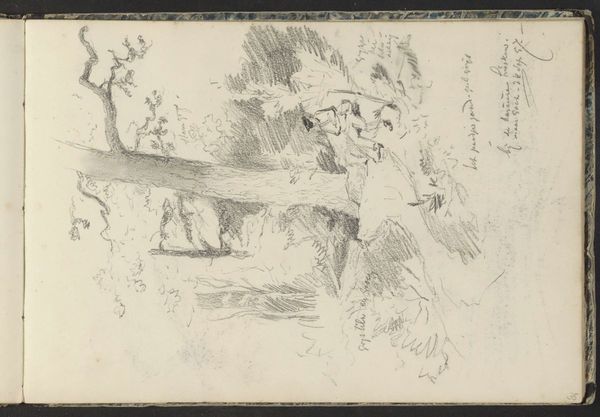
Plaggenhut, beukenboom en heidelandschap in de omgeving van Het Zand bij Materborn 1857 - 1859
0:00
0:00
Copyright: Rijks Museum: Open Domain
Johannes Tavenraat made this pencil drawing of a landscape near Materborn in the Netherlands. While ostensibly a simple landscape study, the image subtly reflects prevailing cultural attitudes towards nature in the 19th century. The quick, almost journalistic style, suggests the artist sought to capture the scene authentically, yet the composition reveals a careful selection and arrangement of elements. The inclusion of the "plaggenhut," a sod house, evokes the rural lives of the working class, romanticizing their connection to the land. This idealization conveniently overlooks the harsh realities of peasant life, a common trope in the art of the time. Made during a period of increasing industrialization, the drawing could be viewed as a nostalgic counterpoint to urban development. The art market in the Netherlands was dominated by romantic landscapes like this and served the taste of the elite class. To fully understand Tavenraat's work, we might consult social histories of the Netherlands, examining how art institutions and economic forces shaped the production and consumption of landscape imagery. The true meaning of art lies not just in the image itself, but in its complex relationship with society.
Comments
No comments
Be the first to comment and join the conversation on the ultimate creative platform.
